I think I probably have a month or more worth of samples to drink, so eradicating them is really not entirely possible. Right now I’m just trying to pare them down, and to drink up the little bits or broken leaves that are in each bag. At least this way the shipping that I have to do soon can be done a little easier with less mess.
Before I go on about today’s tea, I should mention this: If anybody has experience shipping a fair amount of tea, or has any ideas about how to pack said tea for medium term storage (a month or two) please let me know. Right now I am thinking of sticking the tea in a cardboard box and ship it over to Hong Kong. The tea will be divided into tongs, and be wrapped in plastic bag (perhaps double plastic bag) that are odorless and tightly knotted so that they are more air tight. This way I hope to keep the tea from absorbing any excessive moisture or funny smells. If anybody can see a big problem with this arrangement… let me know that too.
Digression aside, today I took out one of the older bags of samples I got last fall. This is from a guy who makes tea in Kunming. He goes up to the mountains, collect maocha for old tree teas, and then presses and sells them. He seems to sell a lot through Sanzui, although he probably has other channels to do so, as well as having a store in Kunming. The teas he makes are consistently of decent quality, but the prices are not low. In some ways, this is definitely one way for a tea merchant who can’t compete on cost to do well — the boutique teashop that makes great tea. It’s nice to know, at the very least, that when you buy from this guy the tea won’t have funny problems like green-tea or deliberate pre-fermentation or anything like that.
So the sample I tried was the Bangwei mountain 2006 fall tea.
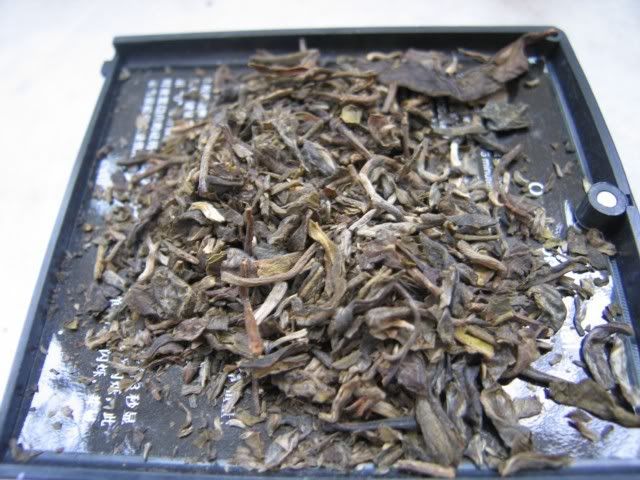
As you can see…. it’s really the shavings, broken bits, and loose leaves of the piece he sent me. There’s still probably 20g of the piece intact, but since the shavings is about 6g, I brewed that.
I only drank this tea once or twice, and my memory of it is faint. I think both times it was drunk in a long tasting session with other people, so there was never an individual, clear impression of the tea. This is my chance, I suppose.
The tea brews up slightly dark.

The first infusion…. was strong. The second stronger. The tea reminds me of the days when I first started drinking young puerh without knowing much about them… there’s that strong, bitter, taste with that slight hint of sourness to it, hitting you head on and reminding you that this tea really shouldn’t be drunk right now. I think the fact that the leaves were so chopped up has something to do with the harshness of the tea. The bitter does turn to sweet, and rather quickly too, but the first second or two was powerful. I did feel a bit of throatiness, but the strength of the tea was most obvious when I got up with my cup to take a picture of the liquor with natural light at the third infusion. My heart was pumping — this was more caffeine than qi, but either way, it was making its presence known.
The tea didn’t last that many infusions, having endured about 10 before just becoming sweet water, although the tea taste remained and I brewed a further few infusions after dinner to clear my mouth of MSG. I tried finding leaves in the chopped liver, and eventually found a few more complete pieces…
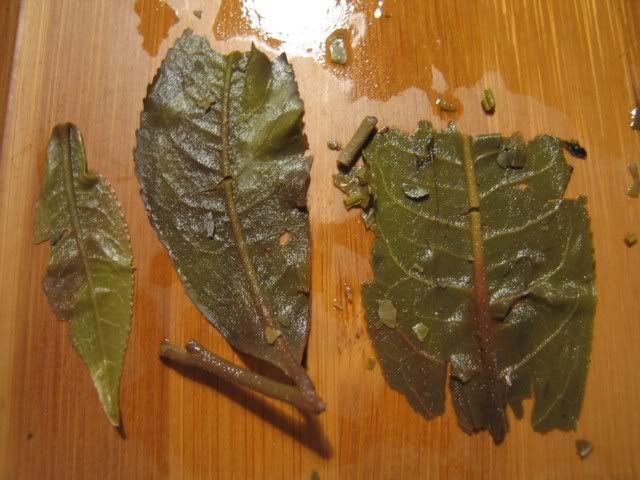
I got two cakes of the spring 2006 after trying this sample. I still haven’t opened the spring cakes to drink yet, and probably shouldn’t for a while yet. I think this will make pretty interesting tea in a few years.





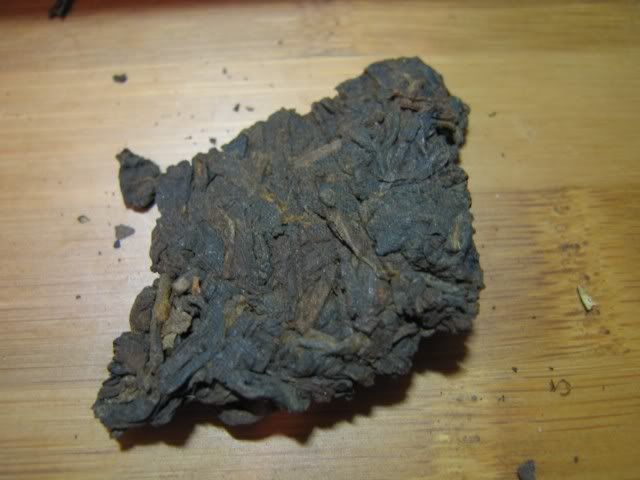
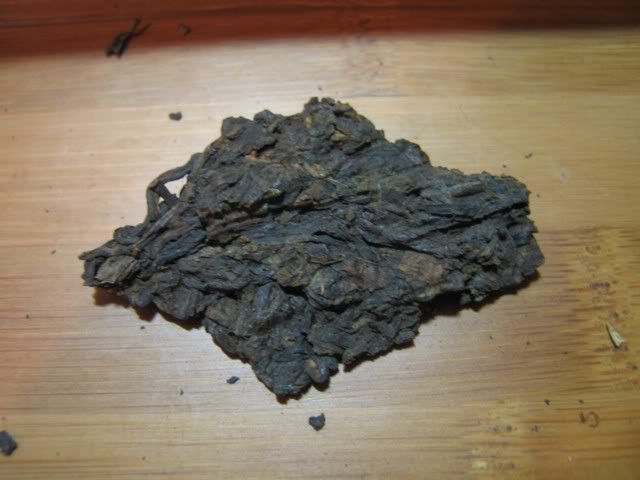
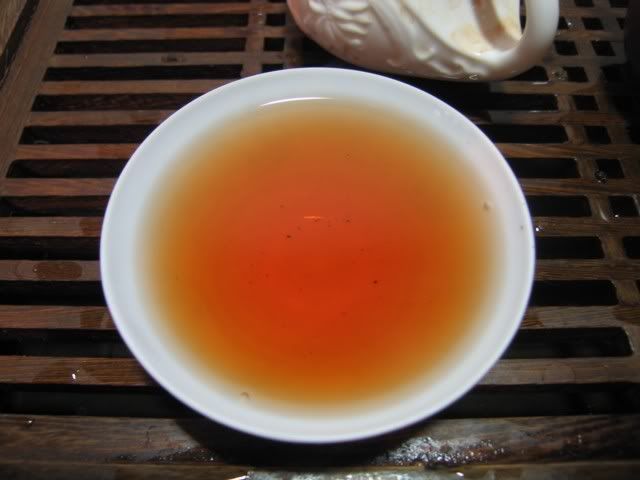
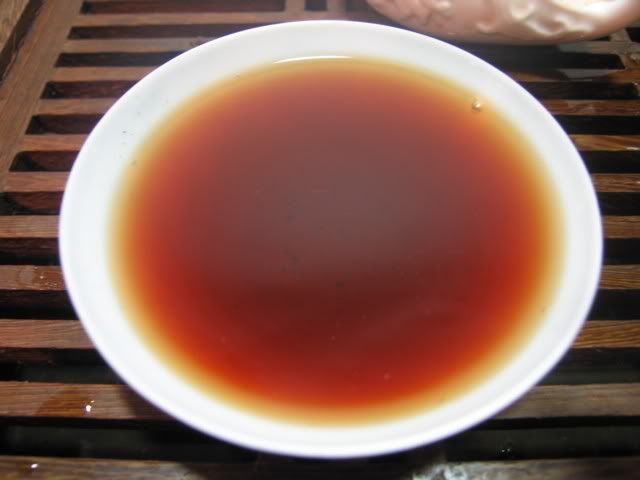
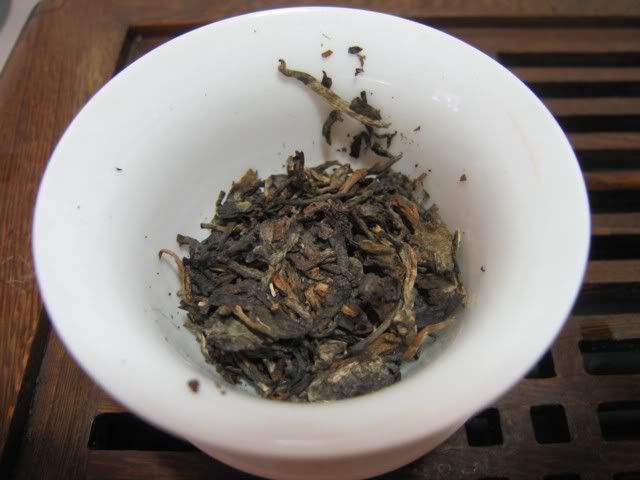
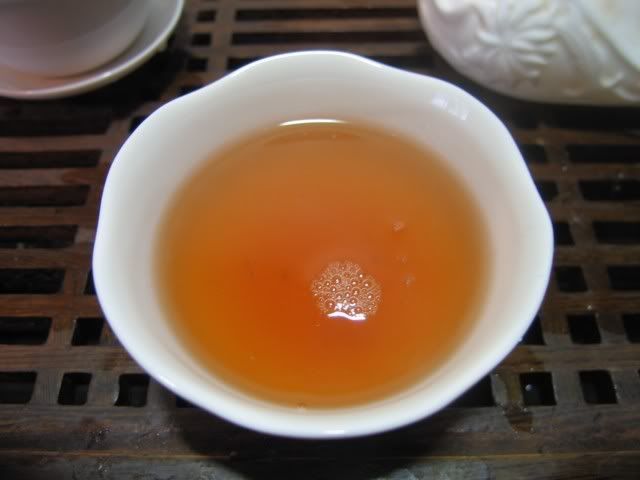
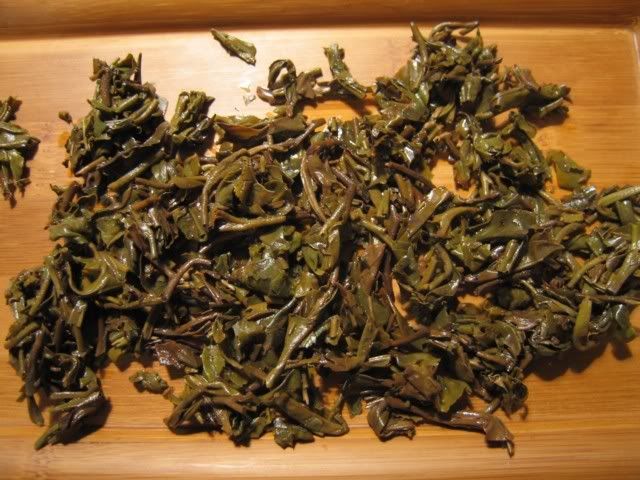
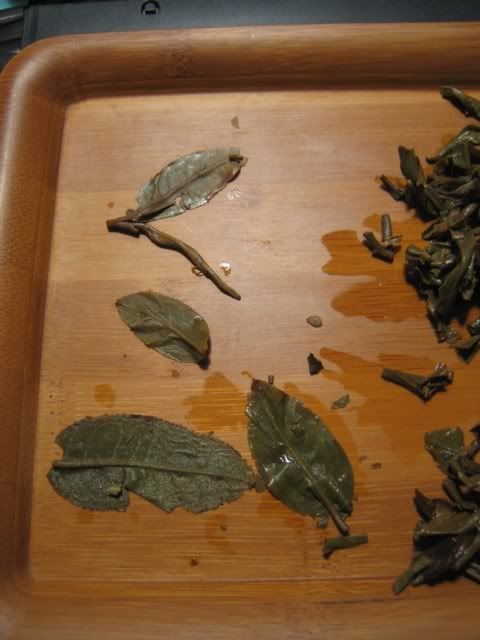


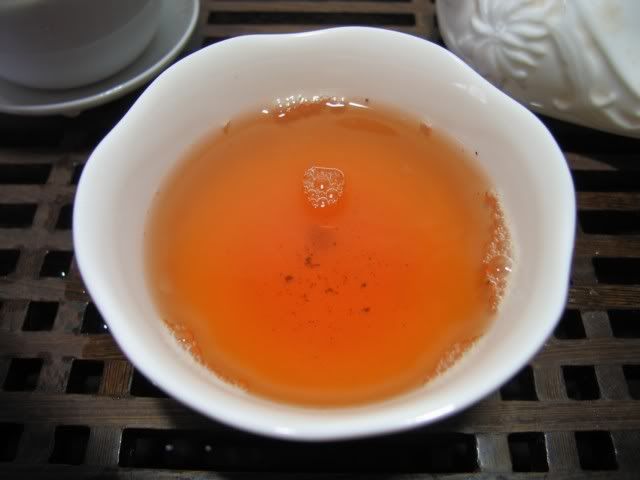
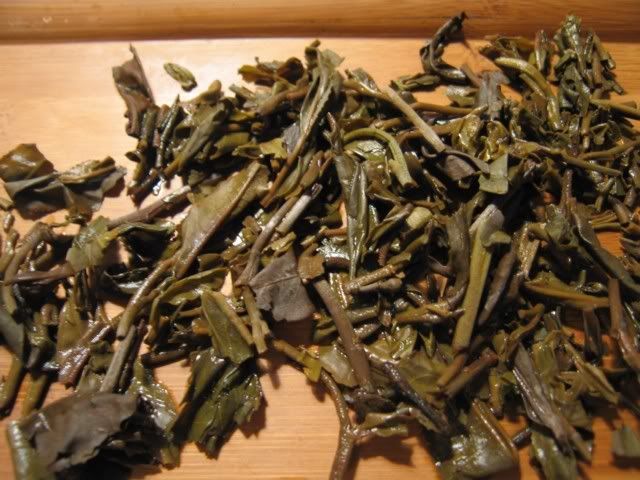
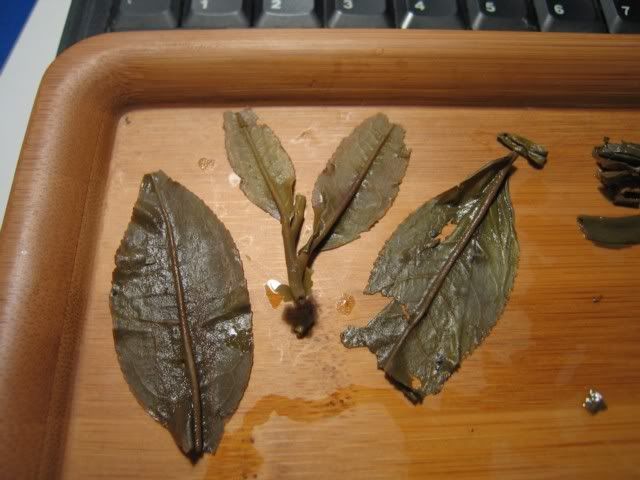
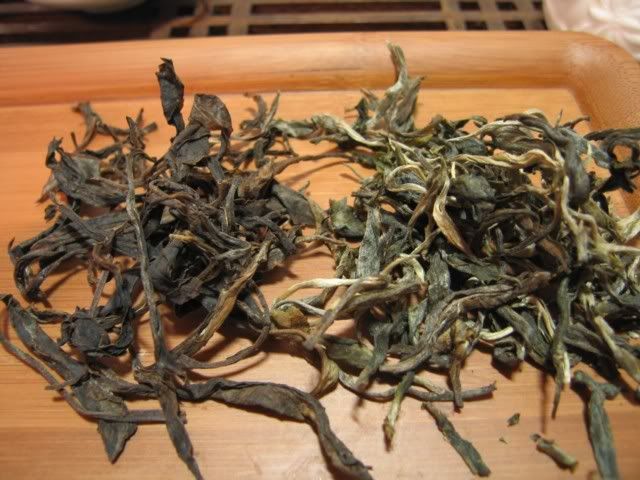
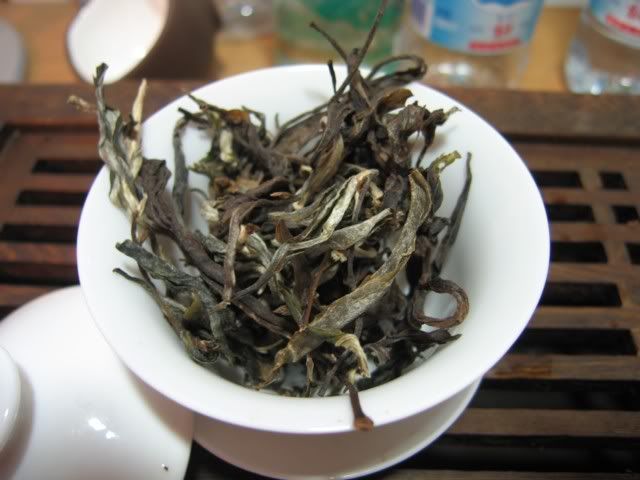


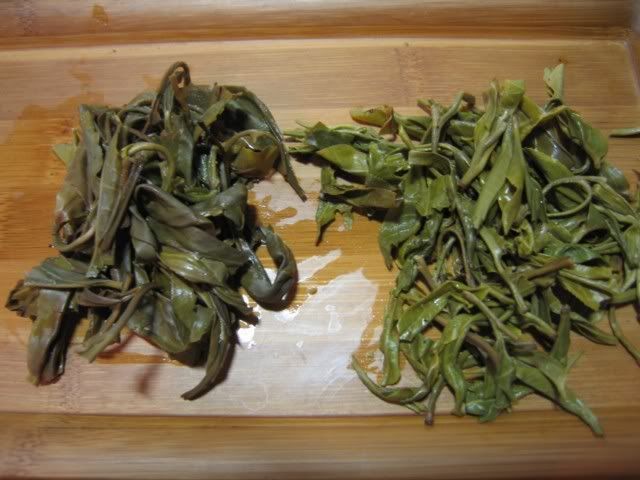
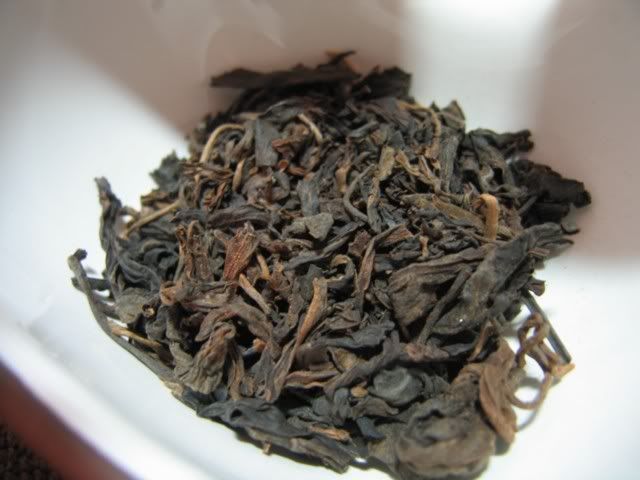
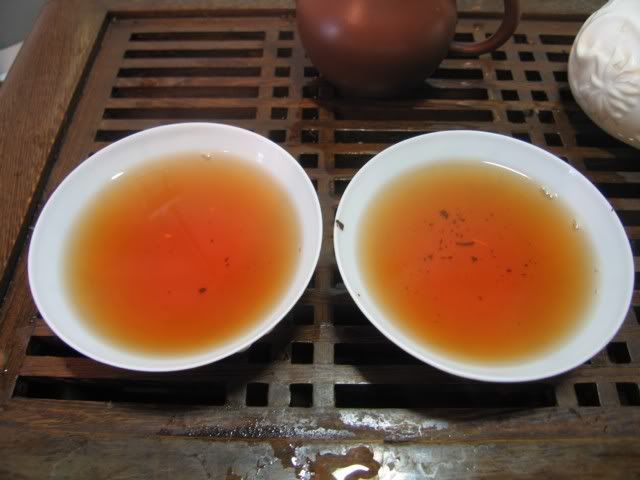
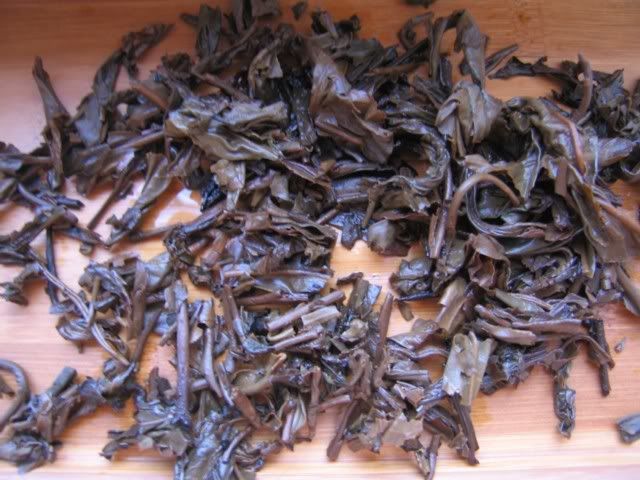
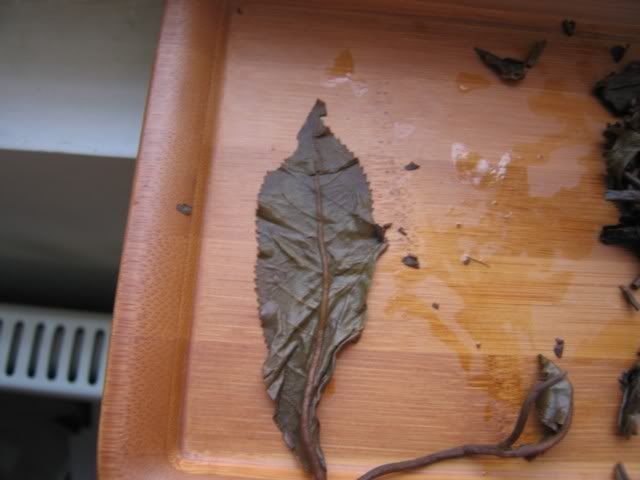
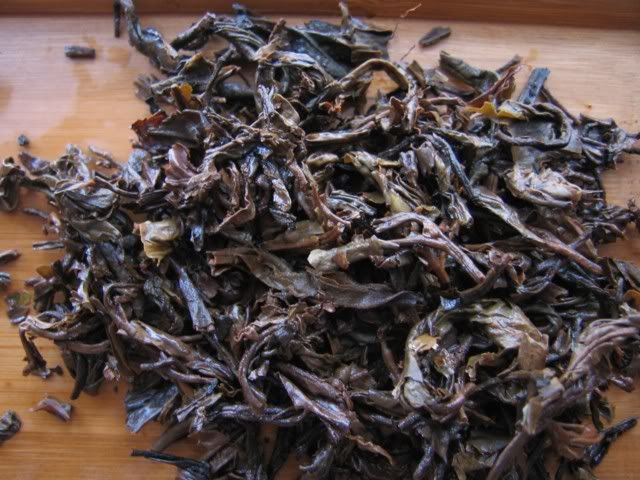
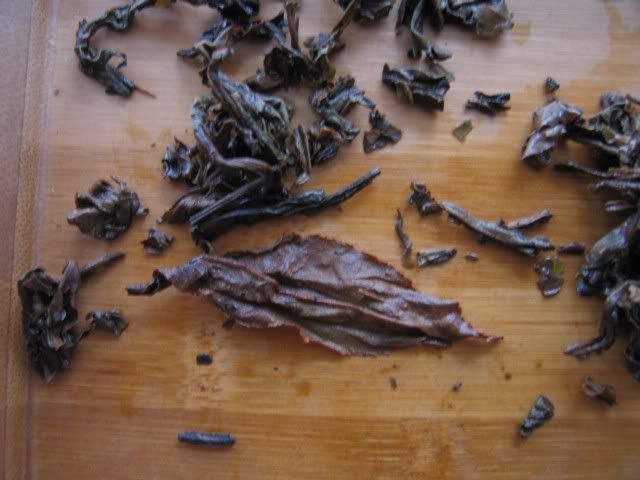
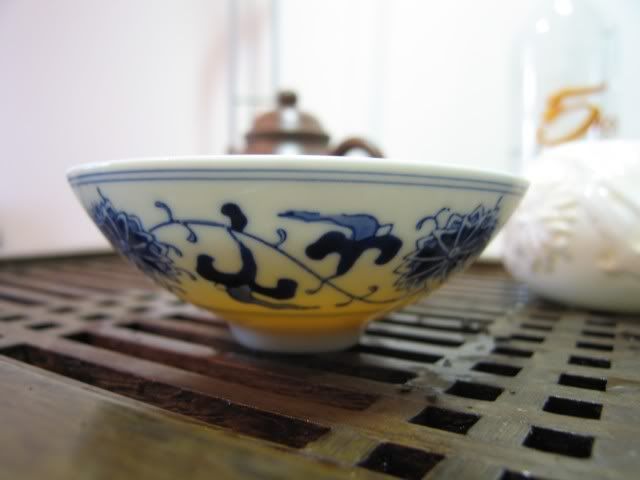
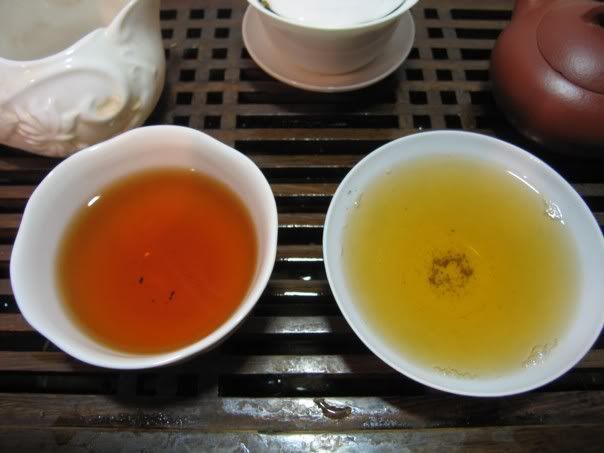
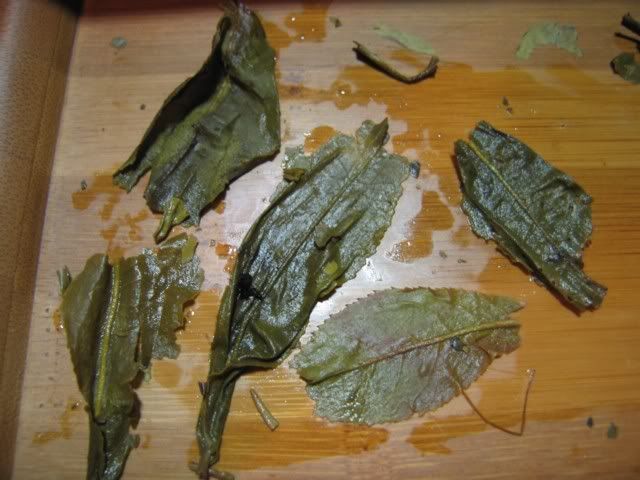

 RSS - Posts
RSS - Posts
Interesting.... would 250C in my oven work?